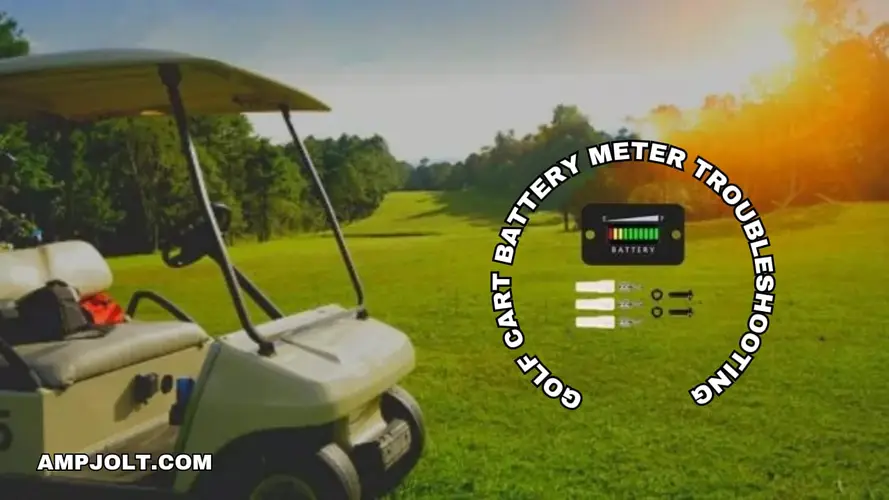Is Battery Technology Hindering the Green Energy …
April 14, 2018

Golf carts are a popular mode of transportation in various settings, from golf courses to residential communities. A functional battery meter is crucial for monitoring the power levels to ensure a smooth and reliable ride. However, golf cart battery meters can encounter issues like any electrical component.
If your golf cart battery meter is displaying inaccurate readings or experiencing issues, troubleshoot by checking for loose connections, inspecting wiring, and verifying calibration settings. Consult the user manual for specific troubleshooting steps. If problems persist, consider professional assistance or replacement for optimal performance.
This comprehensive guide will explore the common problems associated with golf cart battery meters and provide detailed troubleshooting steps to address these issues effectively.
Golf cart battery meters serve as vital indicators, offering real-time information about the battery's charge status. They typically operate on a voltage-based system, displaying the battery's voltage to estimate its charge level. While many golf carts come equipped with reliable battery meters, issues may arise over time, leading to inaccurate readings or complete failures.
One of the most common issues is inaccurate readings. This can manifest as the meter displaying a higher or lower charge level than the actual state of the battery. Inaccuracies may result from calibration errors or a malfunctioning meter.
Some users may encounter issues where the battery meter display is dim or fails to illuminate at all. This could be due to problems with the meter's backlight, wiring, or internal components.
Another issue is when the battery meter shows fluctuating readings even when the golf cart is stationary. This may indicate a loose connection, wiring problems, or interference from other electrical components.
A delayed response occurs when the meter takes significant time to update after charging or discharging. This could be a sign of internal circuitry issues or a failing meter.
Sometimes, the battery meter may fail, showing no signs of life. This can result from internal component failure, water damage, or a blown fuse.

Use a multimeter to measure the actual voltage of the golf cart batteries. Compare the readings with the meter's display. If there's a significant discrepancy, it may indicate a calibration issue.
Some meters allow for calibration adjustments. Refer to the user manual to determine if your meter has this feature. Follow the provided instructions to recalibrate the meter for accurate readings.
Visually inspect the wiring and connections associated with the battery meter. Look for loose or damaged wires, corroded terminals, or disconnected plugs. Secure connections and replace damaged components as needed.
Examine the golf cart's fuse box for any blown fuses related to the battery meter. Replace any blown fuses with the correct rating to restore proper functionality.
Ensure the battery meter has a solid ground connection. Poor ground can lead to erratic readings or meter failure. Clean the ground connection point and secure it tightly.
Inspect the backlight or LED display for damage if the meter display is dim or not working. Replace faulty components or bulbs to restore visibility.
Inspect the battery meter for signs of water damage. Water infiltration can cause internal corrosion and lead to meter failure. Replace any water-damaged components.
Keep electrical components away from the battery meter, as interference can affect readings. Ensure that other electronic devices or accessories are not causing signal disruptions.
If possible, substitute the existing battery meter with a known good one. If the replacement meter functions correctly, it indicates that the original meter may be faulty and requires replacement. It would help if you also read Do gas stations sell 510 batteries?
If troubleshooting steps do not resolve the issue, contact the golf cart manufacturer or the battery meter manufacturer for further assistance. They may provide specific troubleshooting steps or recommend professional services.
Recalibrating your golf cart battery meter is a process that involves adjusting the meter's settings to ensure accurate readings of the battery's charge level. Here's a step-by-step guide to help you recalibrate your golf cart battery meter effectively:
Start by locating the user manual for your golf cart or battery meter. The manual will provide specific instructions on how to recalibrate the meter. If you don't have the manual, you can often find it on the manufacturer's website.
Before beginning the recalibration process, ensure that the golf cart is parked on a level surface and is safely secured. Turn off the ignition and disconnect the battery to prevent electrical shock during the procedure.
Access the calibration settings depending on the type and model of your battery meter. This may involve pressing specific buttons in a particular sequence, using a combination of key turns, or using a remote control. Consult the user manual for precise instructions.
Follow the steps outlined in the user manual to enter the calibration mode. This mode allows you to adjust the meter's settings to achieve accurate voltage readings.
Once in calibration mode, you'll typically have the option to adjust the voltage reading displayed by the battery meter. Use the provided controls or buttons to incrementally increase or decrease the voltage reading until it matches the actual voltage of the batteries.
After making adjustments, exit the calibration mode and turn on the golf cart. Allow the batteries to charge or discharge slightly, then check if the meter accurately reflects the changes in voltage. Repeat the process until the readings are consistently accurate.
Repeat the recalibration process if you notice any discrepancies or inaccuracies in subsequent readings. Fine-tune the adjustments until the battery meter consistently provides precise readings.
Once you are satisfied with the calibration, confirm that the battery meter consistently and accurately reflects the batteries' charge level. This confirmation ensures that the recalibration process was successful.
If your battery meter allows specific settings to be saved, follow the user manual's instructions to keep the calibrated settings. This step ensures that the recalibration adjustments are retained, even if the golf cart is turned off.
Perform regular checks of the battery meter to ensure ongoing accuracy. Factors such as battery age, temperature changes, and usage patterns can impact calibration over time. If you notice any significant deviations, repeat the recalibration process.
Recalibrating your golf cart battery meter is straightforward when following the manufacturer's guidelines. Regular recalibration, especially after significant changes in environmental conditions or battery replacements, ensures that your battery meter provides accurate readings, allowing you to effectively monitor the charge level of your golf cart batteries. Always prioritize safety and consult the user manual for instructions tailored to your golf cart model and battery meter.
Maintaining a properly functioning battery meter is crucial for getting the most out of your golf cart. By understanding common issues and following the troubleshooting steps outlined in this guide, you can address battery meter problems effectively. Regular inspection, proper calibration, and prompt resolution of any issues will contribute to a reliable and accurate battery monitoring system, ensuring a seamless and enjoyable golf cart experience.
Inaccurate readings can be caused by calibration errors or a malfunctioning meter. Calibrate the meter following the user manual instructions or replace it if the problem persists.
Inspect the backlight or LED display for damage. Replace faulty components or bulbs to restore visibility. If the issue persists, check for blown fuses or consult the manufacturer for further assistance.
Fluctuating readings may indicate a loose connection, wiring problems, or interference from other electrical components. Inspect the wiring and connections, secure them, and avoid placing other electronic devices near the meter.
Yes, a blown fuse related to the battery meter in the golf cart's fuse box can lead to display issues or complete meter failure. Inspect the fuse box, replace any blown fuses with the correct rating, and ensure proper functionality.
Substitute the existing battery meter with a known good one if possible. If the replacement meter functions correctly, it indicates that the original meter may be faulty and requires replacement.
Check for blown fuses, inspect for water damage, and verify the ground connection. If troubleshooting steps do not resolve the issue, consult the manufacturer for further assistance or consider replacing the meter.
Yes, water damage can lead to internal corrosion and affect the performance of the battery meter. Inspect the meter for signs of water damage and replace any water-damaged components.
Yes, electrical interference from other electronic devices or accessories can affect the golf cart battery meter readings. Keep these components away from the meter to ensure accurate readings.
Comments
Write a comment